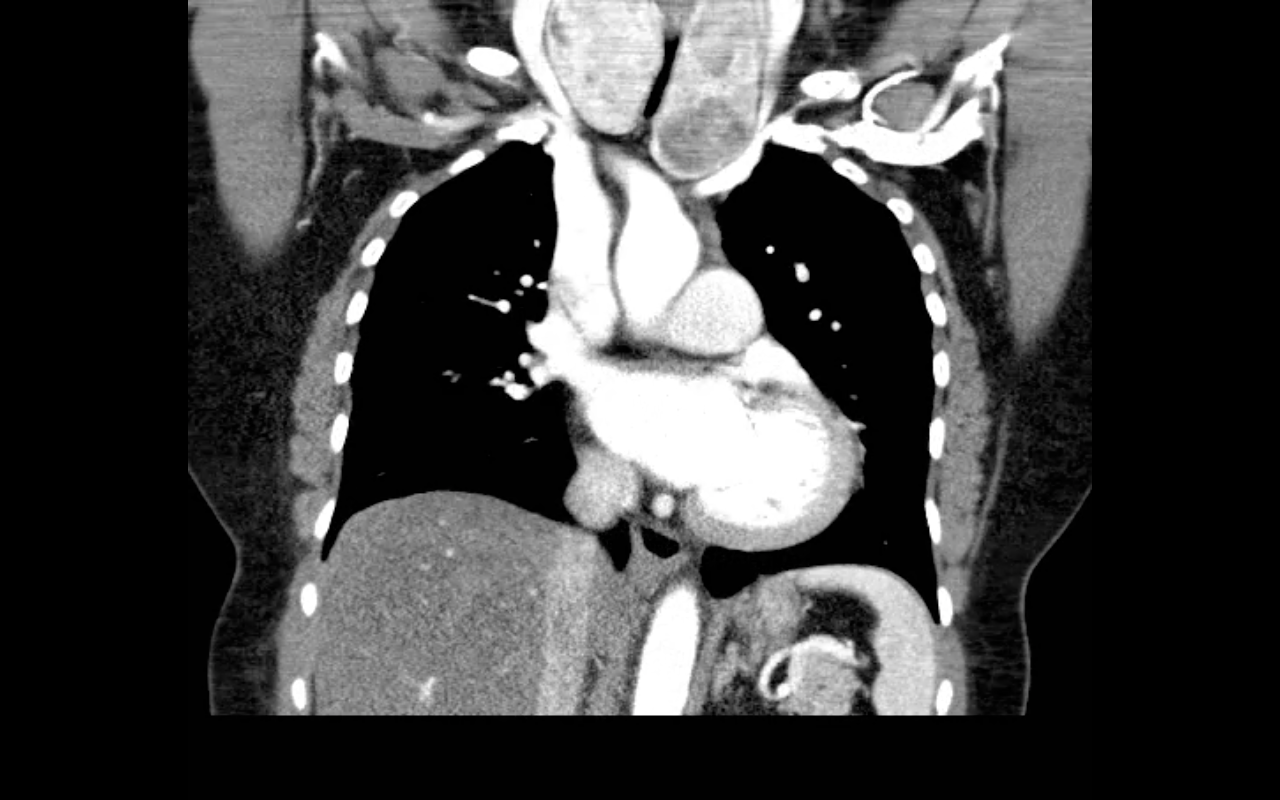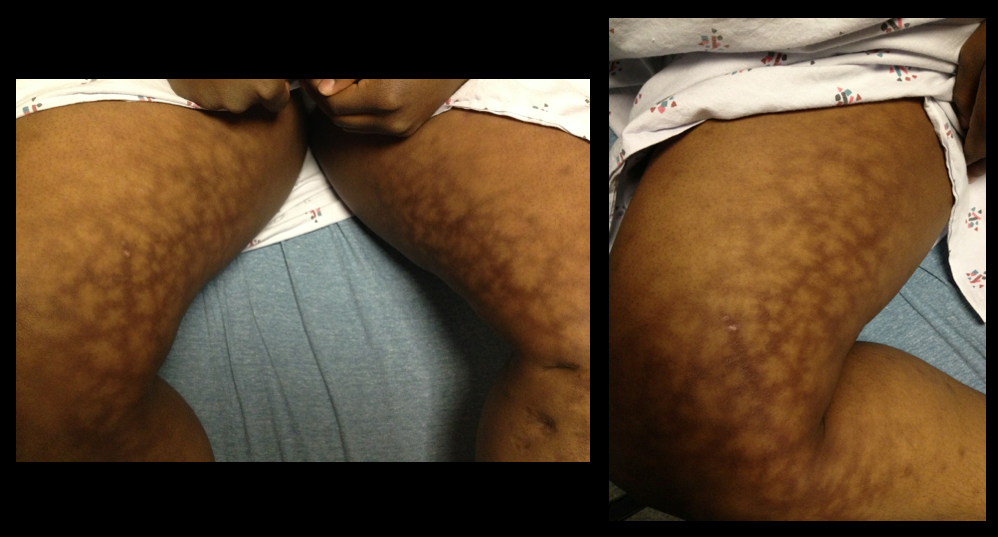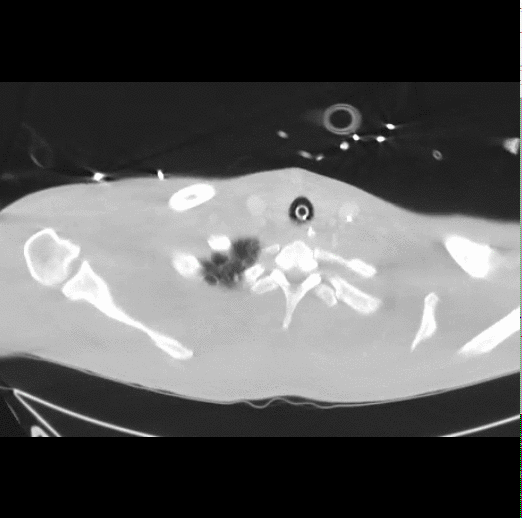Category: Pediatrics
Posted: 2/22/2013 by Mimi Lu, MD
Click here to contact Mimi Lu, MD
Luu JL, Wendtland CL, Gross MF, et al. Three percent saline administration during pediatric critical care transport. Ped Emerg Care 2011;27(12):1113-1117
Category: Toxicology
Keywords: opioid, withdrawal, seizure (PubMed Search)
Posted: 2/21/2013 by Fermin Barrueto
Click here to contact Fermin Barrueto
Typical opioid withdrawal include clinical symtpoms of piloerection, nausea, vomiting and diarrhea. If you were to see seizure, another etiology other than opioid withdrawal should be investigated.
Except in the case of neonates borne to women who have been taking opioids chronically such as a methodone patient. Once the child is born, symptoms of withdrawal may take days to weeks to materialize though seizures typically occur <10 days. The child is at increased risk of SIDS as well.
Category: International EM
Keywords: japanese encephalitis, international, virus, infectious disease (PubMed Search)
Posted: 2/20/2013 by Andrea Tenner, MD
(Updated: 12/5/2025)
Click here to contact Andrea Tenner, MD
Japanese Encephalitis
http://wwwnc.cdc.gov/travel/yellowbook/2012/chapter-3-infectious-diseases-related-to-travel/japanese-encephalitis.htm#2473
Category: Critical Care
Posted: 2/19/2013 by Mike Winters, MBA, MD
Click here to contact Mike Winters, MBA, MD
Managing Traumatic Hemorrhagic Shock
Bougle A, et al. Resuscitative strategies in traumatic hemorrhagic shock. Annals of Intensive Care 2013; 3.
Category: Visual Diagnosis
Posted: 2/18/2013 by Haney Mallemat, MD
Click here to contact Haney Mallemat, MD
68 year-old female presents with stridor and palpable goiter. Here's a clip from CT of the chest. What's the diagnosis?

Category: Cardiology
Keywords: Transcatheter Aortic-Valve Replacement (TAVR) (PubMed Search)
Posted: 2/17/2013 by Semhar Tewelde, MD
Click here to contact Semhar Tewelde, MD
Makkar R, Fontana G, et al. Transcatheter Aortic-Valve Replacement for Inoperable Severe Aortic Stenosis. NEJM. May 2012: 366; 18.
Category: Toxicology
Keywords: antidote, pregnancy, ethanol, amyl nitrate, methylene blue, penicillamine, lorazepam, diazepam (PubMed Search)
Posted: 2/13/2013 by Bryan Hayes, PharmD
(Updated: 2/14/2013)
Click here to contact Bryan Hayes, PharmD
Most antidotes have not been adequately studied in pregancy and hold a Pregnancy Risk Category 'C' by the FDA. However, there are a few antidotes that hold a category 'D' or 'X' rating (contraindicated).
In most cases, the benefits of short-term use probably outweigh the risk, especially when accounting for the health and prognosis of the mother.
Lexi-Comp Online, Lexi-Drugs Online, Hudson, Ohio: Lexi-Comp, Inc.; February 14, 2013.
Follow me on Twitter (@PharmERToxGuy)
Category: International EM
Posted: 2/13/2013 by Walid Hammad, MD, MBChB
Click here to contact Walid Hammad, MD, MBChB
- The most common disease producing enzymopathy in humans
- Affects 400 million people worldwide
- Highest prevalence is among persons of African, Asian, and Mediterranean descent
- Patients can be asymptomatic but may present with symptoms of acute hemolytic anemia, which may be precipitated by certain medications (Oxidative medications) or foods (some types of beans)
- Avoid oxidative drugs (consult your PharmD when your patient has G6PDd)
- Diagnosis: Measure the actual enzyme activity of G6PD rather than the amount of the enzyme. A more practical test is the presence of Indirect hyperbilirubinemia, but it is non specific
- Treatment consists of oxygen and bed rest in minor cases. However, severe cases may require PRBC transfusion
Beutler E. Glucose-6-phosphate dehydrogenase deficiency: a historical perspective. Blood. Jan 1 2008;111(1):16-24
Nkhoma ET, Poole C, Vannappagari V, et al. The global prevalence of glucose-6-phosphate dehydrogenase deficiency: a systematic review and meta-analysis. Blood Cells Mol Dis. May-Jun 2009;42(3):267-78
Category: Critical Care
Posted: 2/12/2013 by Haney Mallemat, MD
Click here to contact Haney Mallemat, MD
Propofol is generally a well-tolerated sedative / amnestic but occasionally it can lead to the propofol infusion syndrome (PRIS); a metabolic disorder causing end-organ dysfunction.
Suspect PRIS in patients with increasing lactate levels, worsening metabolic acidosis, worsening renal function, increased triglyceride levels, or creatinine kinase levels. End-organ effects include:
The true incidence of PRIS is unknown, however, certain risk factors have been identified:
Prevent PRIS by using adequate analgesia (with morphine or fentanyl) post-intubation, which may reduce the overall dosage of propofol ultimately reducing the risk.
If PRIS develops, stop propofol and provide supportive care; IV fluids, ensuring good urine output, adequate oxygenation, dialysis (if indicated), vasopressor and inotropic support.
Follow me on Twitter (@criticalcarenow) or Google+ (+criticalcarenow)
Category: Visual Diagnosis
Posted: 2/10/2013 by Haney Mallemat, MD
(Updated: 2/11/2013)
Click here to contact Haney Mallemat, MD
A 25 year-old female presents complaining of a "net-like" rash bilaterally on her medial thighs. She denies any pain but states that the rash looks “pretty scary” What's the diagnosis?

Answer: Erythema ab igne (a.k.a. "toasted-skin syndrome")
Erythema ab igne
Follow me on Twitter (@criticalcarenow) or Google+ (+criticalcarenow)
Category: Cardiology
Posted: 2/10/2013 by Semhar Tewelde, MD
Click here to contact Semhar Tewelde, MD
-Common life-threatening cardiovascular effects of cocaine intoxication include tachydysrhythmias, ventricular fibrillation, myocardial ischemia, and infarction.
-Emergency management of acute cocaine intoxication relies mainly on supportive and symptomatic treatment, w/liberal use of gamma-aminobutyric acid receptor agonists such as benzodiazepines.
-Intravenous lipid emulsion (ILE) therapy has been used successfully to treat cardiac toxicity associated with a variety of lipid-soluble drugs, such as local anesthetics, calcium/beta-blockers, tricyclic anti-depressants, and cocaine.
-The current hypothesis, called the “lipid sink” hypothesis, suggest that ILE infusion creates an expanded lipid phase in the plasma that absorbs the circulating lipophilic toxin and decreases the amount of free unbound toxin available to bind to the myocardium.
-When life-threatening cardiac arrhythmias (e.g. wide-complex tachycardia/prolonged QT) are not amenable to standard therapy (e.g. sodium bicarbonate/magnesium) consider ILE as a potential option to the current algorithm.
Arora N, Berk W, et al. Usefulness of Intravenous Lipid Emulsion for Cardiac Toxicity from Cocaine Overdose. The American Journal of Cardiology. Volume 111, Issue 3. Feb 2013.
Category: Orthopedics
Keywords: head injury, concussion, return to play (PubMed Search)
Posted: 2/9/2013 by Brian Corwell, MD
(Updated: 12/5/2025)
Click here to contact Brian Corwell, MD
Estimated 3.8 million sport-related concussions per year (likely significantly higher due to underreporting)
Most patients recover within a 7-10 day period
** Children and teenagers require more time than college and professional athletes
This "accepted" time for recovery is not scientifically established and there is a large degree of variability based on multiple factors including age (as above), sex & history of prior concussions
Approximately 10% of athletes have persistent signs and symptoms beyond 2 weeks (which may represent a prolonged concussion or the development of post-concussion syndrome)
During this time the patient should have complete rest from all athletic activities, close follow-up with PCP and be educated re concussions.
If practical, "cognitive rest" should also be prescribed. This is one of the most frequently neglected aspects of post-concussion care and will be discussed in a future pearl.
Category: Toxicology
Keywords: anabolic, bodybuilding, weightlifting, beta agonist, myocardial infarction (PubMed Search)
Posted: 2/7/2013 by Ellen Lemkin, MD, PharmD
Click here to contact Ellen Lemkin, MD, PharmD
Category: International EM
Keywords: Melioidosis, Burkholderia pseudomallei (PubMed Search)
Posted: 2/7/2013 by Andrea Tenner, MD
(Updated: 12/5/2025)
Click here to contact Andrea Tenner, MD
Just a quick clarification to last week's melioidosis pearl:
An astute reader noted the typo: "The patient should also be covered for melioidosis, and infection caused by Burkholderia pseudomallei." The sentence should read "...meliodosis, an infection caused by Burkholderia pseudomallei."
Just to clarify, melioidosis is caused by the bacteria Burkholderia pseudomallei.
Many apologies for any confusion this might have caused.
Thanks for reading!
Andi Tenner, MD, MPH
Category: International EM
Keywords: Rifapentine, latent tuberculosis, international, infectious disease (PubMed Search)
Posted: 2/6/2013 by Andrea Tenner, MD
(Updated: 12/5/2025)
Click here to contact Andrea Tenner, MD
Background Information:
Active tuberculosis (TB) develops in 5-10% of individuals who become infected with M. tuberculosis, typically after a latency period of 6-18 months (but sometimes decades later). Compliance with the 9 month self-supervised isoniazid (INH) regimen has been porr with completion rates <60%. Until recently, daily rifampin for 4-6 months has been the only alternative when the bacterium is resistant or INH cannot be used.
Pertinent Study Design and Conclusions:
Bottom LIne:
A substantially shorter course of therapy with INH-RPT is now the recommended treatment for latent TB.
University of Maryland Section of Global Emergency Health
Author: Emilie J. B. Calvello, MD, MPH
MMWR Morb Mortal Wkly Rep. 2011 Dec 9;60(48):1650-3.
Category: Critical Care
Posted: 2/5/2013 by Mike Winters, MBA, MD
Click here to contact Mike Winters, MBA, MD
Needle Decompression - Are we Teaching the Right Location?
Inaba K, et al. Optimal positioning for emergent needle thoracostomy: A cadaver-based study. J Trauma 2011; 71:1099-1103.
Inaba K, et al. Radiologic evaluation of alternative sites for needle decompression of tension pneumothorax. Arch Surg 2012; 147:813-8.
Martin M, et al. Does needle decompression provide adequate and effective decompression of tension pneumothorax? J Trauma 2012; 73:1412-1417.
Category: Visual Diagnosis
Posted: 2/4/2013 by Haney Mallemat, MD
(Updated: 3/20/2013)
Click here to contact Haney Mallemat, MD
40 year-old male presents with fever, chills, & cough. What’s the diagnosis and the MOST likely cause?

Answer: Pneumatocele from MRSA pneumonia
Pneumatocele
Pneumatoceles are thin-walled, air-filled cysts with lung parenchyma; they may be solitary or multiple
Most commonly a sequellae to pneumonia secondary to Staphylococcus aureus (up to 85% of cases), although other etiologic agents have been found (Streptococcus pneumonia, E. coli, Klebsiella, Adenovirus and Tuberculosis). Non-infectious causes include trauma, hydrocarbon ingestion, and positive pressure ventilation.
Pneumatoceles are typically asymptomatic and require treatment of the inciting etiology (e.g., antibiotics for pneumonia), but complications may occur including tension pneumatocele, pneumothorax, and secondary infection of the pneumatocele.
Surgical resection is typically not needed but percutaneous catheter drainage may be required if the pneumatocele involves >50% of the hemithorax
Advise patients against exposure to high altitudes, skydiving and scuba diving until pneumatocele(s) resolve, to avoid progression to pneumothorax.
Follow me on Twitter (@criticalcarenow) or Google+ (+criticalcarenow)
Category: Cardiology
Posted: 2/3/2013 by Semhar Tewelde, MD
(Updated: 12/5/2025)
Click here to contact Semhar Tewelde, MD
Dumas F, Rea T, et al. Chest compression alone cardiopulmonary resuscitation is associated with better long-term survival compared with standard cardiopulmonary resuscitation.Circulation. 2013 Jan 29;127(4):435-41.
Category: Pharmacology & Therapeutics
Keywords: lidocaine, intraosseus, IO (PubMed Search)
Posted: 1/2/2013 by Bryan Hayes, PharmD
(Updated: 2/2/2013)
Click here to contact Bryan Hayes, PharmD
Intraosseus (IO) access has become quite popular in critically ill patients requiring immediate resuscitation. In a patient responsive to pain, however, pain and discomfort is associated with the force of high-volume infusion through the established line.
Before flushing the line, consider administering preservative-free 2% lidocaine (without epinephrine) for patients responsive to pain prior to flush.
The suggested dose is 20-40 mg (1-2 mL) of the 2% lidocaine, followed by the 10 mL saline flush.
If preservative-free 2% lidocaine is not stocked in your ED, now is the time to consider adding it.
Fowler RL, Pierce, Nazeer S, et al. Powered intraosseous insertion provides safe and effective vascular access for emergency patients. Ann Emerg Med 2008;52(4):S152.
Ong MEH, Chan YH, Oh JJ, et al. An observational, prospective study comparing tibial and humeral intraosseus access using EZ-IO. Am J Emerg Med 2009;27(1):8-15. [PMID 19041528]
Follow me on Twitter (@PharmERToxGuy)
Category: Pediatrics
Posted: 2/1/2013 by Lauren Rice, MD
Click here to contact Lauren Rice, MD
This winter season has brought a rise in influenza and RSV activity in Maryland and in many parts of the country. It is also important to remember other potentially lethal infections that are prevalent in the winter and early spring months, such as Neisseria meningitidis. In fact, a recent study2 showed a potential increase in meningococcal disease when influenza and RSV activity is high.
What:
Encapsulated, gram-negative diplococcus
Where:
Found in nasopharyngeal secretions, carrier rates 2-30% in normal populations
Who:
Age of incidence has 2 peaks: children < 2 years old, teens 15-19 years old
Young adults who live in shared housing, such as college dorms and military recruits
Clinical Presentation:
Early non-specific symptoms of URI, fever, malaise, myalgias
Meningitis: non-specific prodrome + headache, stiff neck (not found in younger children who often present atypically with irritability and/or vomiting)
Meningococcemia: above symptoms + hypotension + petechial rash (>60% of patients)
Treatment:
Early (!) antibiotics: 3rd generation cephalosporins (<3mo: cefotaxime; older infants, children, and teens: ceftriaxone); PCN G is antibiotic of choice for susceptible isolates
Early and aggressive management of shock
Prevention:
Tetravalent vaccine, MCV4 (Menactra, Menveo), available for serogroups A, C, Y and W-135 is given routinely at age 11-12 years old with an additional booster at 16-17 years old. MCV4 does not protect against serogroup B which accounts for 30% of infections.
1. Cross JT, Hannaman RA. Infectious Disease. MedStudy Pediatrics Board Review Core Curriculum: 5th edition. 2012; 5-11.
2. Jansen AG, Sanders EA, VAN DER Ende A, VAN Loon AM, Hoes AW, Hak E. Invasive pneumococcal and meningococcal disease: association with influenza virus and respiratory syncytial virus activity?. Epidemiol Infect. Nov 2008;136(11):1448-54.
3. Javid MH. Meningococcemia. Available at http://emedicine.medscape.com/article/221473. Medscape Reference. Last updated Aug. 2. 2012.
